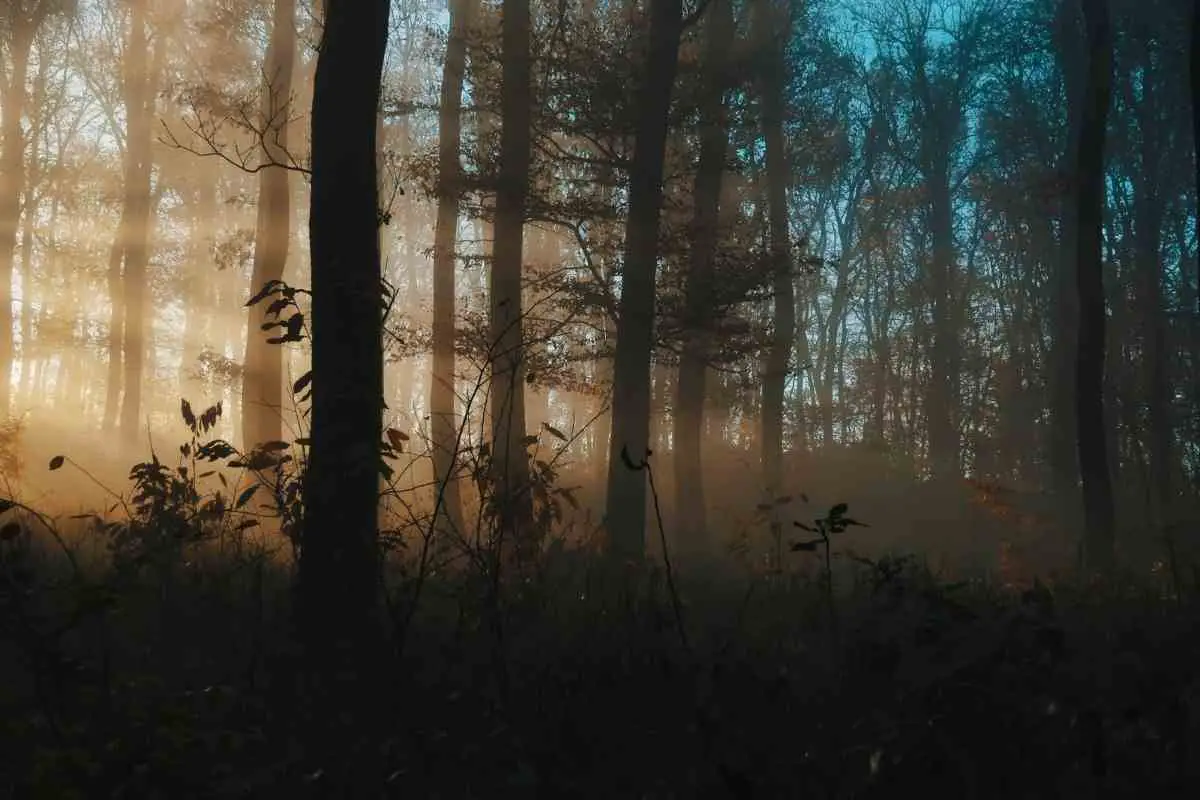All plants can make their food. They absorb carbon dioxide from the atmosphere, water from the soil, and light from the sun and make food, a process known as photosynthesis.
Besides the food they manufacture, plants need minerals to survive, which they get from the ground.
Some environments don’t have all the essential nutrients.
As such, plants must adapt to survive. This explains the presence of carnivorous plants. However, none of these plants feeds on humans.
The Myths about Man-eating Plants
There are several tales about plants eating human beings.
However, while some plants are large enough to capture and kill insects and small animals, nobody has ever seen man-eating flora.
To date, most of these stories remain myths. But, perhaps, such big plants existed in the pre-historic era, with other gigantic creatures like dinosaurs.
Nobody has proof of these claims, although some cultures still pass them on to current generations.
But how did the stories come up?
The Evolution of Carnivorous Plants
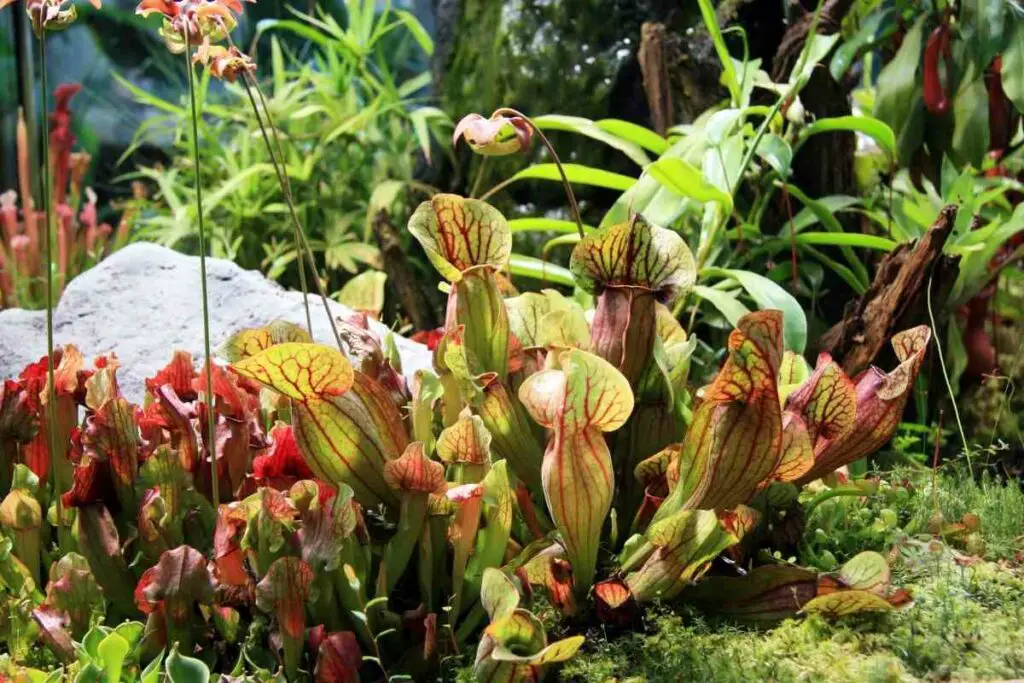
Plants that grow in bogs and swamps don’t get adequate minerals from the soil, as the excess water carries them away.
Due to this, the plants have adapted to become carnivorous to avoid nutritional deficiencies.
Evolution theorist, Charles Darwin, called meat-eating plants ‘ insectivores’ because insects were their primary target.
However, further studies revealed that the plants could eat other small animals, resulting in a name change to carnivores.
Did You Know? Carnivorous plants use different techniques to capture prey. Some use nectar to lure unknowing insects into a sticky substance. Others produce paralyzing sap.
Common Carnivorous Plants
Here are the most common carnivorous plants.
Nepenthes (Pitcher Plants)
Nepenthes, commonly known as pitcher plants, are the largest carnivorous plants.
The biggest varieties grow in Southeast Asian rainforests, where they can reach up to 50 feet long.
The plant gets its name from large containers that resemble pitchers.
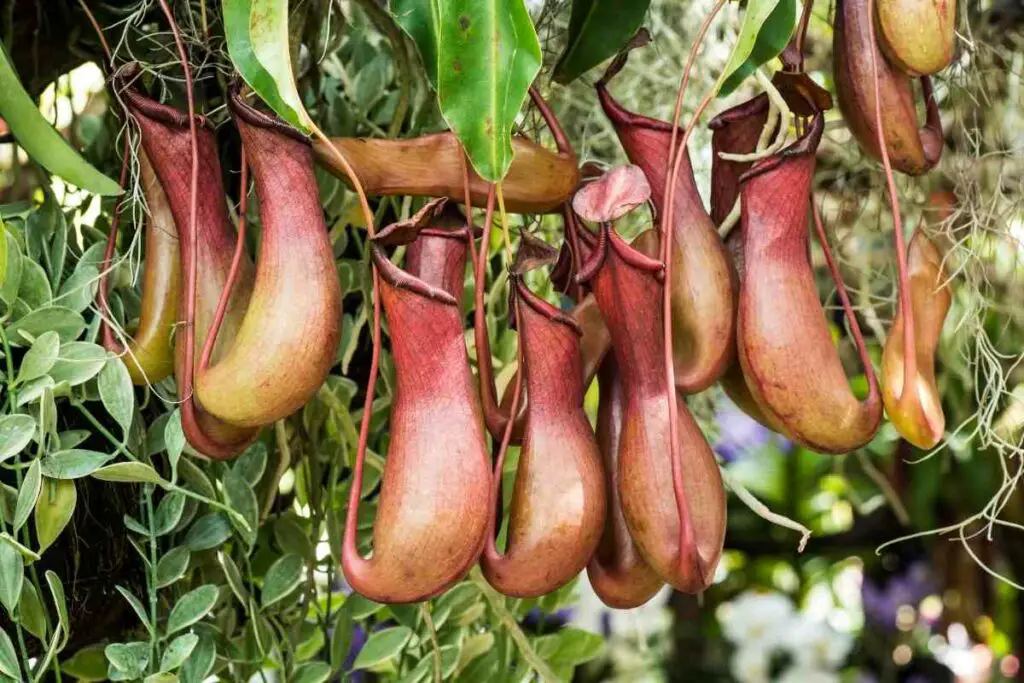
These containers can hold up to four quarts of an acidic liquid that digests prey. However, Nepenthes cannot expel waste.
Pitcher plants mostly feed on:
- small frogs
- insects
- and, sometimes, rats
Since they can’t expel waste, exoskeletons fill the pitchers as the plants age, making them look like graveyards.
Despite their vast size, Nepenthes can’t effectively digest human meat.
To put this into perspective, the plant struggles to break down larger prey like rats, meaning it would take months to digest a human part, such as a fingernail.
Interestingly, Southeast Asians have discovered how to use pitchers for cooking rice and vines to make ropes.
The Madagascar Tree
In 1878, a German traveler called Carl Liche compiled a report about an unexciting party.
Liche visited Madagascar, where he interacted with a local tribe known as the Modo.
He detailed how the residents picked an offering for the man-eating tree.
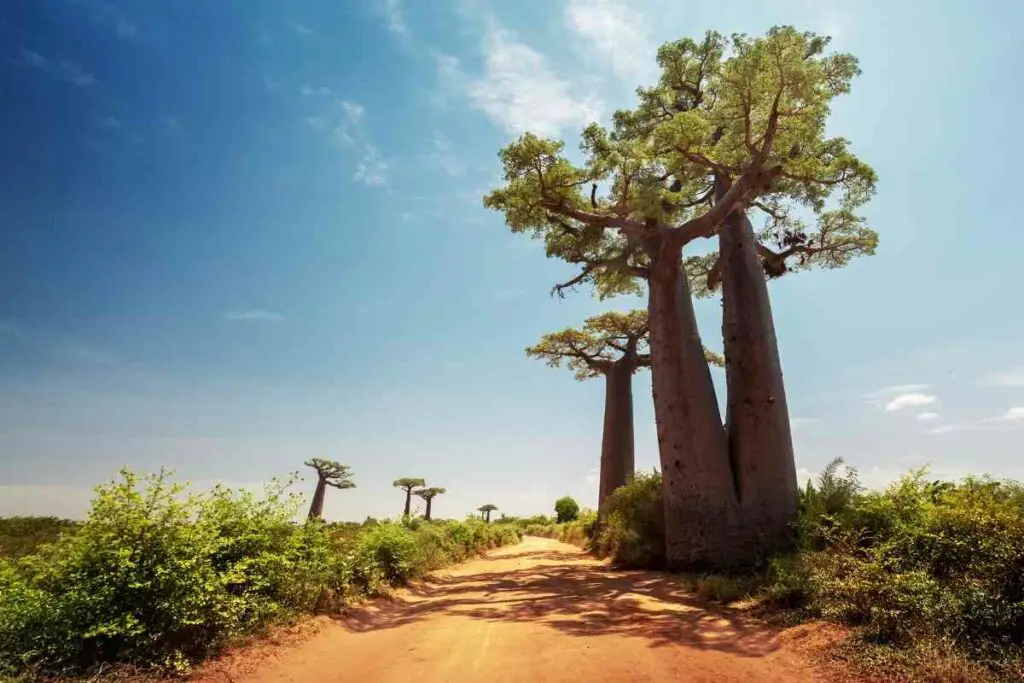
It was a teenage girl poked with spear-like weapons and forced to climb this tree.
According to Liche – The Madagascar tree resembled an oversized pineapple with long hairy tendrils at its top. Inside the tree was a puddle of liquid surrounded by several tentacles. The villagers forced the girl to drink the juice.
After the girl drank its juice, the previously dead tree came to life.
Its long, slender appendages momentarily moved around the girl’s head and, in a flash, pounced on her, entangling her neck and arms.
The action compares to ‘the fury of starved vipers.’ The girl let out awful screams, but the tree’s ironic scoffs soon subdued them as the tree strengthened its stranglehold on her.
The tendril never seemed to let go until she disappeared, never to be seen again.
Research shows that the said tree has never been in Madagascar. Furthermore, the Modo tribe is also non-existent, and nobody can verify the existence of Carl Liche.
The Corpse Flower
The corpse flower is another infamous ‘man-eating plant.’
Also called Amorphophallus titanium, some believe it has the biggest flower in the world, with the most unpleasant smell.
It’s so unsightly that it looks like something that can eat human beings.
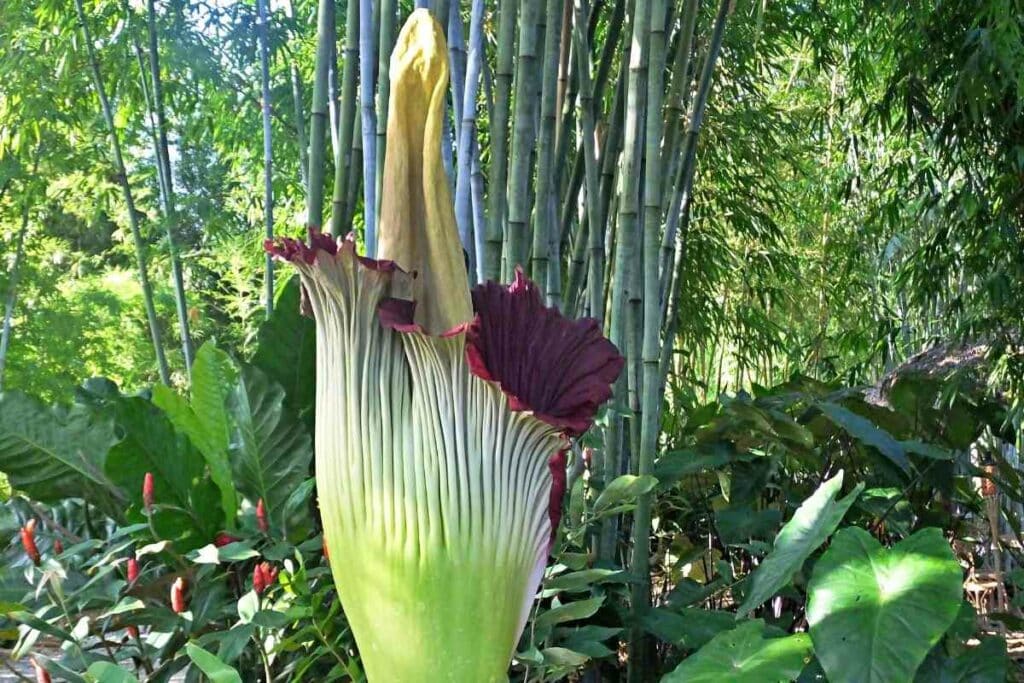
The corpse flower can grow up to nine feet tall when it blooms. It smells like a blend of feces and rotting carcasses.
This pungent odor attracts bees, which remain stuck until pollen grains cover their bodies. Then, the plant releases them to pollinate others.
While the plant grows up to 9 feet tall, its flowers span 3 feet. The corpse flower is among the rarest plants worldwide.
Most trees grow in their native Indonesia, and scientists have little success trying to grow them elsewhere.
Since the first successful blooming of this plant in New York in the 1930s, there have been less than a dozen successes.

However, when the plant blooms, it grows rapidly. It can grow upto 4 inches daily. The blossoms open for only two days.
Although the corpse flower looks spooky, like a potential man-eater, and smells like death, it isn’t carnivorous. Instead, it is harmless to human beings and insects.
The Death Flower
As Captain Arkwright led a voyage across the Pacific in 1581, he made a remarkable discovery on a small island called El Bangor, located on the vast ocean’s south side.
The ship log shows the captain saw a man-eating plant.
Arkwright described the plant as a huge flower with bright petals that releases a sleep-inducing substance.
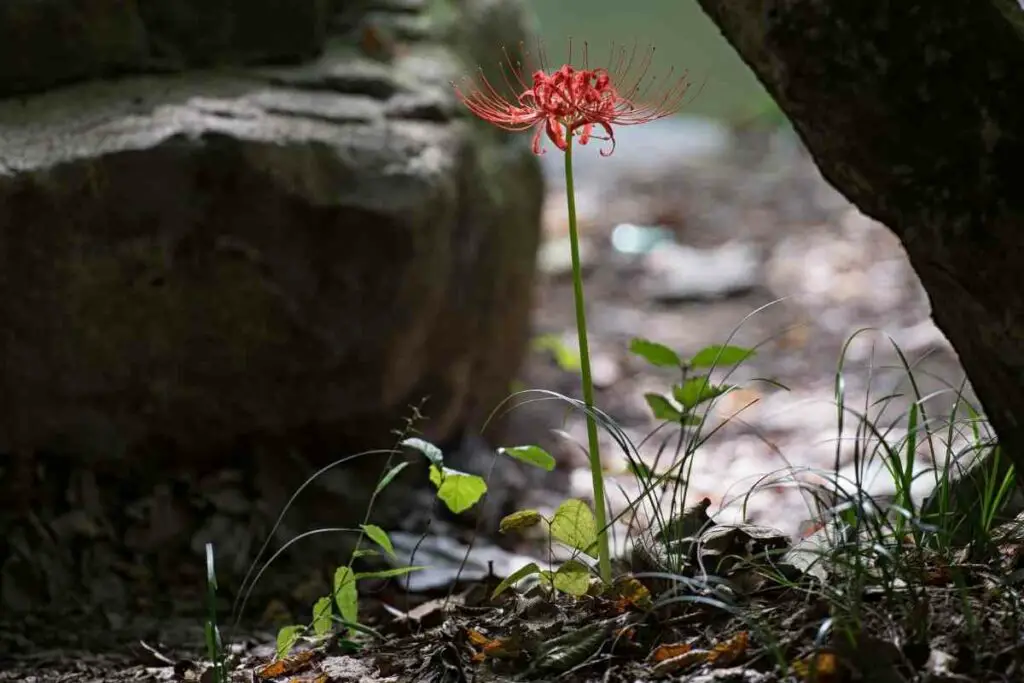
Once a person touches the substance, they would sleep on the large petals, after which the flower would close and ‘swallow’ the victim.
He named the plant the Death Flower.
The captain must have a first-hand witness to the plant’s activity to make such wild claims.
Although it could have happened on a lost South Pacific Island, nobody believes this story. So far, it’s the only report of a carnivorous plant from the South Pacific area.
Yate Veo Tree
A popular Central American legend claims the area is home to a brutal carnivorous spiky that pierces its victims.
The plant, called the Yate Veo tree, is indiscriminate in its attacks – it can harm anyone or anything within its reach.
The spikes are concealed until external pressure triggers them. Once it impales its victims, they cannot escape.
The tree sucks blood from its victims before retracting the spike to prepare for its next targets.
Puya chilensis
Puya chilensis is an evergreen perennial plant native to the arid hillsides of Chile.
It forms large, dense rosettes with greyish-green leaves with hooked spines upon maturity.
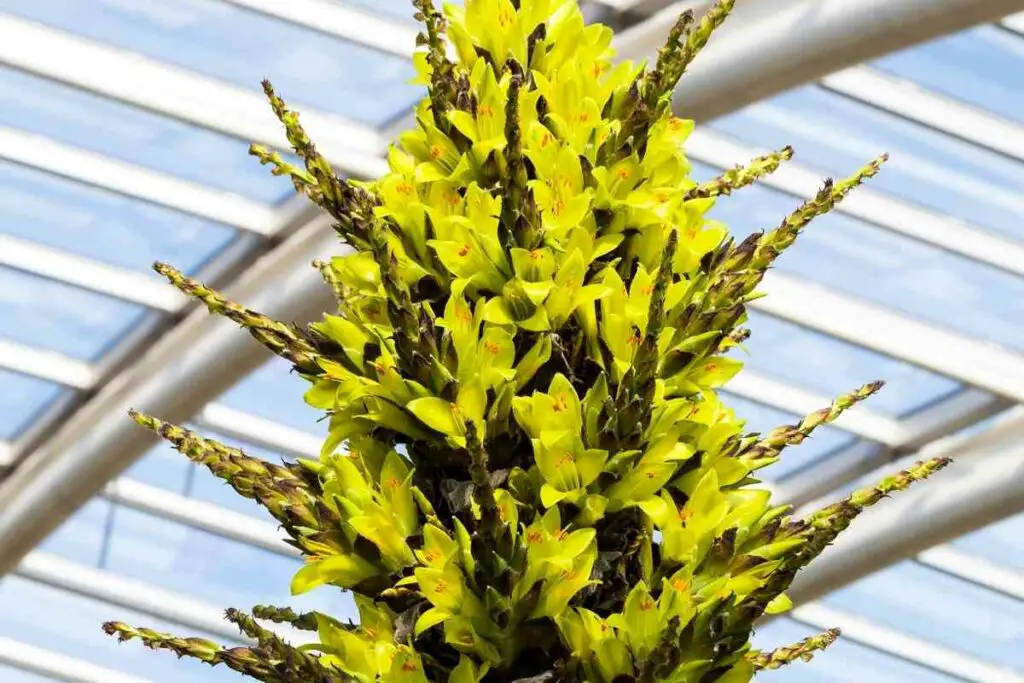
Its flowers are green or yellow and grow on spikes resembling medieval maces. The blooms can grow up to seven feet tall.
The spiny leaves are an adaptation to prevent herbivores from eating the plant.
However, some believe the plant kills birds and sheep by entangling them with these spines.
If the animal dies, the plant gains nutrients as the carcass decomposes.
For This Reason – Puya chilensis is also known as the sheep-eating plant. Puya chilensis’ leaves are useful in making long-lasting fishing nets despite their unproven harm to livestock.
Wrapping Up
The stories about man-eating plants are all myths.
Humans threaten the so-called carnivorous plants more than they do people.
Unfortunately, many people are harvesting these plants irresponsibly to sell them to curious customers.
If the current trend continues, all the pants on this list might go extinct soon.
